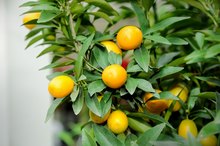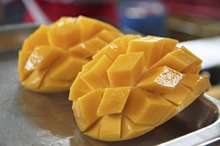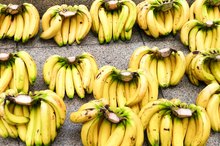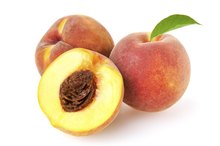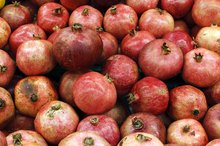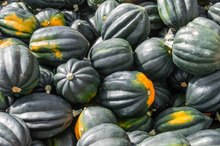Fiber in Kiwifruit
Kiwifruits, also known as Chinese gooseberries, have a fuzzy brown outer coating that hides the bright emerald color of the sweet fruit inside. When you cut open a kiwifruit, you immediately see numerous small seeds that are high in fiber. After you eat a kiwifruit, the sugar, water, vitamins and minerals from the fruit are absorbed from your digestive tract and into your bloodstream. The cell walls of the kiwifruit, however, stay inside your intestines to promote normal bowel function and heart health.
Types of Fiber
Like most other fruits, kiwifruit contains both soluble and insoluble dietary fiber. Soluble fiber dissolves in water within your intestines to form a gel-like substance that helps reduce the level of glucose, total cholesterol and low-density lipoprotein, or “bad cholesterol,” in your blood. The insoluble fiber from kiwifruit provides bulk and softness to your stools, reducing your risk of chronic digestive disorders, such as constipation, hemorrhoids, diverticulosis and diverticulitis.
Fiber Content
Fiber Content of Blueberries
Learn More
Kiwifruit sold in the United States are typically either green or gold kiwifruits. A cup of sliced raw green kiwifruit delivers 5.4 grams fiber; one large kiwifruit contains 1.7 grams of fiber, 0.7 grams of which is soluble fiber, and 1.0 gram of insoluble fiber, according to a report from Harvard University Health Services. A single cup of sliced raw gold kiwifruit. Frozen kiwifruit, sometimes sold as part of a tropical fruit mix, has the same fiber content as raw kiwifruit.
Recommendations for daily fiber intake vary depending on your age or sex. If you’re a man, you need at least 38 grams of dietary fiber daily through age 50, and then 30 grams a day after that. Women require a minimum of 30 grams daily through age 50, and then 21 grams a day from that point forward. Children should eat at least 10 grams daily plus one additional gram for each year of age. A cup of sliced raw green kiwifruit delivers more than 41 percent of the daily requirement for a 15-year-old, but meets only 14 percent of his 35-year-old dad’s daily needs.
Other Nutrition
Kiwifruits offer more than fiber. They’re calorie-dense foods, which means they are high in energy and low in calories. A serving of two kiwifruits provides almost 2.5 times your recommended daily allowance of vitamin C, more potassium than a banana, 30 milligrams of magnesium, almost 10 percent of your daily folate requirement and significant amounts of zinc and antioxidants. Fat-free, low-carbohydrate kiwis have a glycemic index of 52 that makes them ideal for weight management and diabetes control.
Serving Suggestions
Are Carrots a Source of Fiber?
Learn More
Kiwi can be eaten whole, cut up and put on a green or fruit salad or added to smoothies. Kiwi can be pureed and used as a marinade; sliced and put on pancakes or chopped into salsa. You can also make kiwi bread or muffins, much the same way you would make banana bread.
Related Articles
References
Resources
Writer Bio
Sandy Keefe, M.S.N., R.N., has been a freelance writer for over five years. Her articles have appeared in numerous health-related magazines, including "Advance for Nurses" and "Advance for Long-Term Care Management." She has written short stories in anthologies such as "A Cup of Comfort for Parents of Children with Special Needs."


